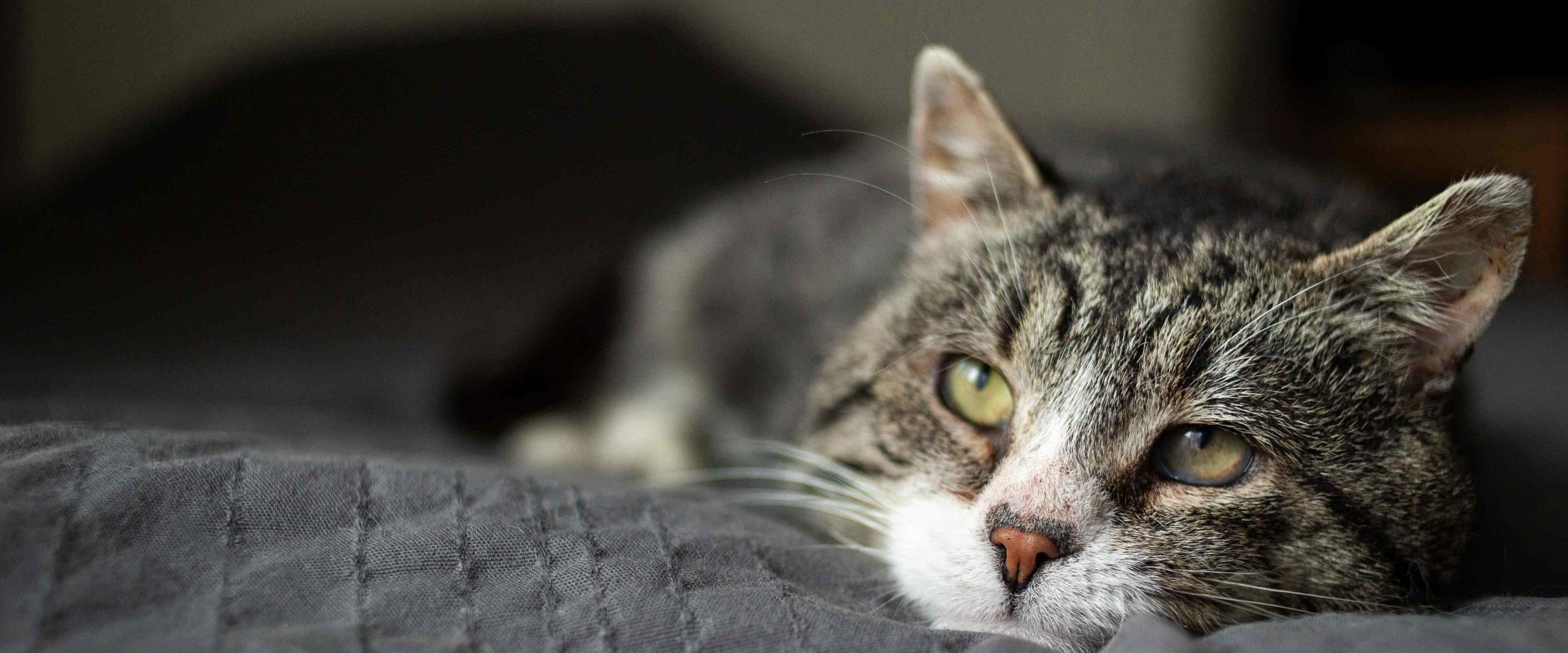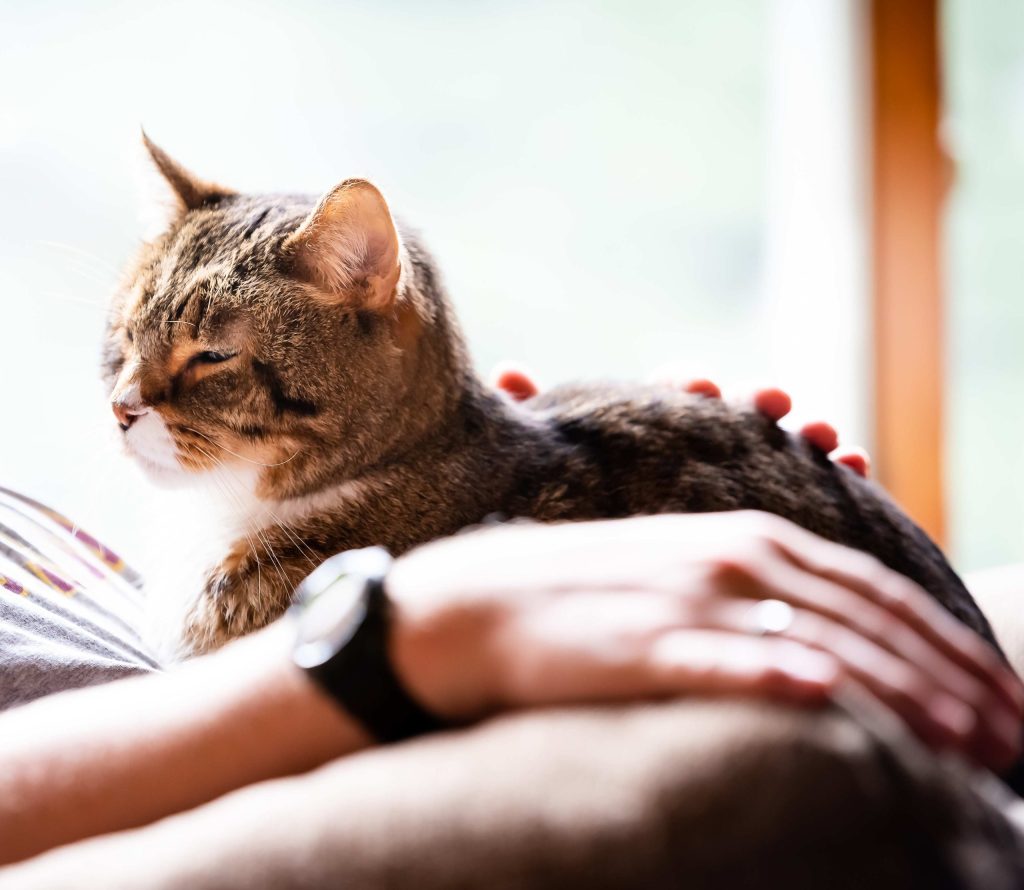
Quality of Life Discussion
Whenever possible, a Quality of Life (QOL) discussion should take place long before the moment in which a conclusion must be reached on its presence or absence.
- Nurture the relationship with the caregiver. During the development of a relationship between the caregiver and veterinarian, the characteristics of a good feline life can be conveyed and discussed.
- This information can be discussed at a time prior to making immediate decisions or before an emotional crisis.
- Positive QOL discussion can be made at a time of clear thinking and planning.
Differences in Experience of Life
- The differences between human and animal thoughts and evaluation of circumstances are striking and may not be clearly understood by the caregiver.
- A human can weigh the long-term benefits of immediate personal suffering (e.g., chemotherapy, surgery, therapy) while cats live in the moment.
- Cats “become” their pain. There is only the quality of life now and no ability to anticipate that the future may be better.
- The agreement becomes then for the veterinarian and caregiver to keep the best interest of the cat central to any decisions that must be made.
Ongoing Quality of Life Evaluation
During this assessment, you can determine the composition of a cat’s QOL in order to discuss and agree upon with the caregiver. Without this preparation, the emotional bond may be so powerful, and the immediate situation so confusing, that the caregiver may not be capable of thinking clearly about what is best for their beloved cat.

- Ask the caregiver to recall several elements of a good feline life, which may include:
- Favorite pastimes
- Resting places
- Bonding moments
- Use this assessment as a rational gauge and objective assessment of a good life. Assessing and agreeing on QOL can offer a final reassurance of a good decision to euthanize.
- Additionally, encourage the caregiver to track their cat’s daily behavior and notable events using a simple system, such as a calendar or journal. A calendar with a uniform “good,” “bad,” or “average” status can help objectively assess the cat and provide some guidance in making future decisions. The Client Resource page offers a downloadable 12-month calendar to help caregivers track their behavior.
- Utilize these examples in order to compare the cat’s current status. Recognizing the difference between a period of health and happiness, and the present state of affairs requires rational evaluation.
- Offset emotions of the moment by participating in active listening and acknowledging their feelings. Communicate the facts when describing the variances in the caregivers’ description of their examples of a good feline life versus what the cat is presenting and experiencing now. This is critical in order to make a decision.
- When the planning process commences, it is critical to include a plan for every situation, including emergencies or times when a veterinarian is not available.
- Updated medical records should always be provided to the caregiver or made available through a web portal or phone app.
- Contact information for a consultation may be helpful in the event of an emergency or problem that arises after hours or during holidays.
- Providing these items may prevent unnecessary or counterproductive diagnostics and procedures that can cause pain for the cat and confusion for the caregiver.
Examples of questions to explore with a caregiver when assessing QOL (Download table)
| Parameter | Questions to explore |
| Hurt | How can the pain be controlled? What can we do to improve comfort? |
| Hunger | How can we improve appetite? |
| Hydration | How can we improve hydration? |
| Hygiene | How can we improve hygiene? |
| Happiness | What enjoyable activities are pursued? Which people are deeply connected? |
| Mobility | How can we improve comfort? |
| More Good Days than Bad Days | Good Day = normal activities and daily life. Bad Day = nausea, difficulty breathing, pain, discomfort, etc. |
Adapted from “Shearer TS, ed. Palliative Medicine and Hospice Care, Veterinary Clinics of North America Small Animal Practice. 2011; 41(3):477-702″
When Early QOL Discussions Do Not Occur
There are times when these preparations have not been done because there is no time or the relationship between caregiver and veterinarian is new. In these instances, the veterinarian must be the guide. The veterinarian is obliged to consider the needs of the feline patient above all.
- It is the responsibility of the veterinarian to guide the caregiver to the best outcome for the cat.
- The veterinarian can employ Aesculapian authority when recommending options. Aesculapian authority is conferred to individuals considered “healers” in society and offers veterinarians:
- The perception of the veterinarian as an “expert” based upon their education and experience.
- The veterinarian’s “moral” authority to heal, relieve suffering, and save lives.
- The “charismatic” perception that the veterinarian’s expertise is unique and not held by the caregiver.
- Employing Aesculapian authority gives the veterinarian the influence to overcome the misgivings of caregivers who are emotionally unprepared to make a choice independently.
- The abuse of Aesculapian authority is well-documented.
- When properly employed and with ending suffering as the goal, Aesculapian authority can be a powerful asset.
- More information can be found in an article under the Further Reading section of this Toolkit.
- The FAQ section addresses additional difficult circumstances in euthanasia.
As a veterinarian, the goal of euthanasia for any feline patient is to alleviate suffering and ensure a compassionate end-of-life transition with minimal pain, anxiety, and fear, while also supporting the human-animal bond with their caregiver.
